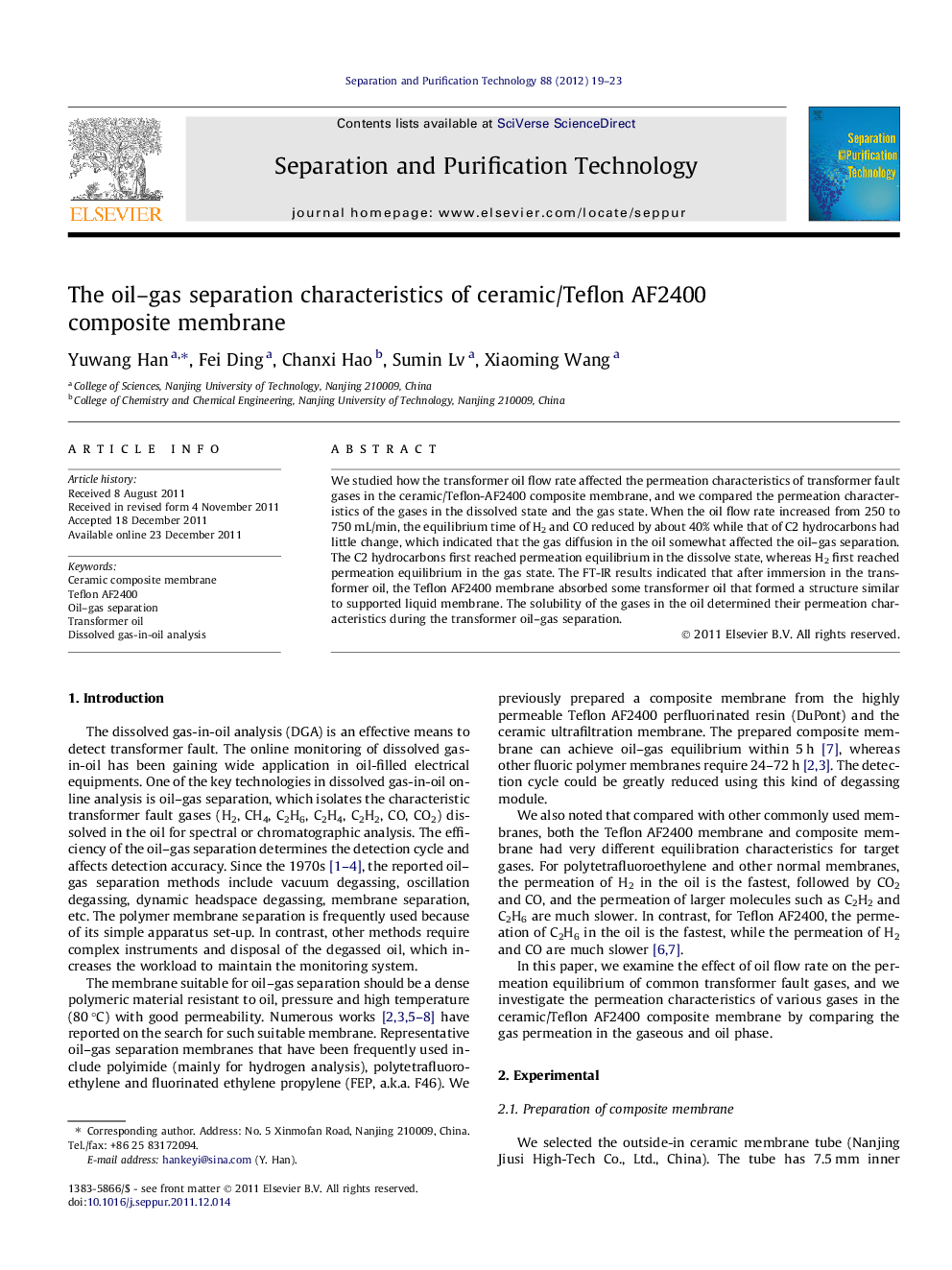| Article ID | Journal | Published Year | Pages | File Type |
|---|---|---|---|---|
| 642290 | Separation and Purification Technology | 2012 | 5 Pages |
We studied how the transformer oil flow rate affected the permeation characteristics of transformer fault gases in the ceramic/Teflon-AF2400 composite membrane, and we compared the permeation characteristics of the gases in the dissolved state and the gas state. When the oil flow rate increased from 250 to 750 mL/min, the equilibrium time of H2 and CO reduced by about 40% while that of C2 hydrocarbons had little change, which indicated that the gas diffusion in the oil somewhat affected the oil–gas separation. The C2 hydrocarbons first reached permeation equilibrium in the dissolve state, whereas H2 first reached permeation equilibrium in the gas state. The FT-IR results indicated that after immersion in the transformer oil, the Teflon AF2400 membrane absorbed some transformer oil that formed a structure similar to supported liquid membrane. The solubility of the gases in the oil determined their permeation characteristics during the transformer oil–gas separation.
► The membrane absorbed oil and formed a supported liquid membrane. ► Dissolved H2 permeated slower compared with H2 gas due to low solubility in oil. ► Solubility of the gases determines permeation behavior in the oil–gas separation.
